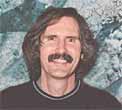Holistic Physics in a Self-Organizing Universe
Mathematical Physics, which takes its cues from Newton, seeks to analyze the universe and the matter it contains in terms of force and energy. We seek to discover ultimate reality by dissecting things into ever smaller parts, backtracking from the visible into the realm particles.
Physics has come a long way in explaining how things work and our mathematical formalisms are extremely useful for technological development, but the larger picture still escapes us. The 'big bang' origin of the universe takes the concepts of force and energy to their highly illogical conclusion. No one can say how that unlikely concentration of energy that, according to physicists, gave rise to a primordial explosion from which both space and matter developed, could have come into being in the first place.
William Day approaches the problem from a different angle. In his books, and now in a paper titled Holistic Physics in a Self-Organizing Universe, he argues that we must look at hierarchies, at systems and patterns of organization. Instead of trying to understand matter in terms of its parts, we must look at how things fit together. Non-Newtonian Physics is a way of looking at the universe as a system, not just an accumulation of material parts that interact and that can be understood by putting them under a microscope.

My favorite analogy for the universe has been that of a tv screen.
What we perceive as a picture in motion is nothing but a clever manipulation of pixels of light. We can create, on a perfectly immobile screen, successive images that our eyes and brain put together into a representation of moving scenes of life. Granted, the physical universe is much more detailed and more "real" than any movie, but we are still looking at the same principle.
What we see on the screen cannot be fully understood by analyzing the details of the single pixels and in a similar way, we can't understand the universe by analyzing matter, by looking at particles and splitting them up into their constituent parts.
William Day's paper details his approach to modeling physical reality by looking at how the screen is made, rather than just analyzing the picture and finding out what its parts are composed of and how they interact with each other ...
- - -
Holistic Physics in a Self-Organizing Universe
by William Day
a few excerpts can hardly communicate the whole idea, but perhaps they will whet your appetite...
Motion is nature's most fundamental variable, and the manner in which it is accounted for forms the basis of physics. Newton founded dynamics on his three laws of motion. The falling of objects and the orbiting of gravitational systems were described mathematically by his equations. Newton, therefore, believed that motion was the result of forces, and curvilinear motion the vector of an inertial motion by an applied force perpendicular to it an attracting force acting at a distance between masses. Without force everything would be mired in inertia or flying off in endless directions.
Soon after Newton's laws of motion, the concept of energy was developed and all forms of motion were given an energy value. Toward the middle of the 19th century physicists formulated the Laws of Thermodynamics and gave their equations an inviolable reference. The first law is a conservation law stating that matter and energy can be neither created nor destroyed. The second law states that energy flows toward lower levels, and hence from order to disorder (entropy).
When we weigh an object or measure its impact on a detecting device, we cannot do it without interfering with its natural state of motion. Whenever we measure the weight, resistance, or force of an object, by necessity we obstruct it. We are interjecting ourselves or our probes into the workings of nature and measuring a response to our interference. We are measuring not a true property of nature that exists with or without us, but rather a response by nature to our interruption. Momentum and force are engineering terms used to describe the work necessary to alter physical conditions to our liking. These imposed properties were picked up by physics and became the basis of dynamics. No one can question the necessity to measure values to make an assessment of nature. But when we are formulating a comprehensive physical theory we have to separate the responses of nature to our disruption from the properties of nature that exist independently of us. A physics based on forces, the energy concept, and causality is extremely powerful for developing technology. There is, however, an inherent deception in using dynamics to form our conception of physical reality.
Holistic physics originated out of the proposition that particles have a system that is consistent with a general structural order for a hierarchy of matter. The discovery of this system cannot be arrived at through the analytical method, since the properties of a system do not exist in the constituents, but are created in its formation. The fundamental properties of mass and charge, which reside in the particles, must therefore originate in the assembly of particles.
Download Holistic Physics in a Self-Organizing Universe (in PDF format)
- - -
More details are in William Day's books
Bridge From Nowhere - A story of Space, Motion, and the Structure of Matter
Bridge From Nowhere II - The Photonic Origin of Matter
Holistic Physics
which you can find listed on his site:





I agree with the idea being put forward here, and I particularly like your TV example Sepp. For some time now I have come to the realization that all these incredibly expensive experiments whose sole purpose is to attempt to 'unlock' the secrets of the universe by smashing atoms at one another, and then picking through the atomic debris are pretty much useless. What we are essentially doing is similar to firing 2 automobiles at each other at close to the speed of light and then picking through all the bits and pieces after the collision has occurred. Where upon we then try to understand how the automobile worked in the first place!
Learning what matter is made of is not as important as knowing how matter got there in the first place, and therefore how matter continues to exist. If we were to understand the concept that motion IS energy AND energy IS motion then we arrive at the conclusion that the only thing that really matters is motion itself.